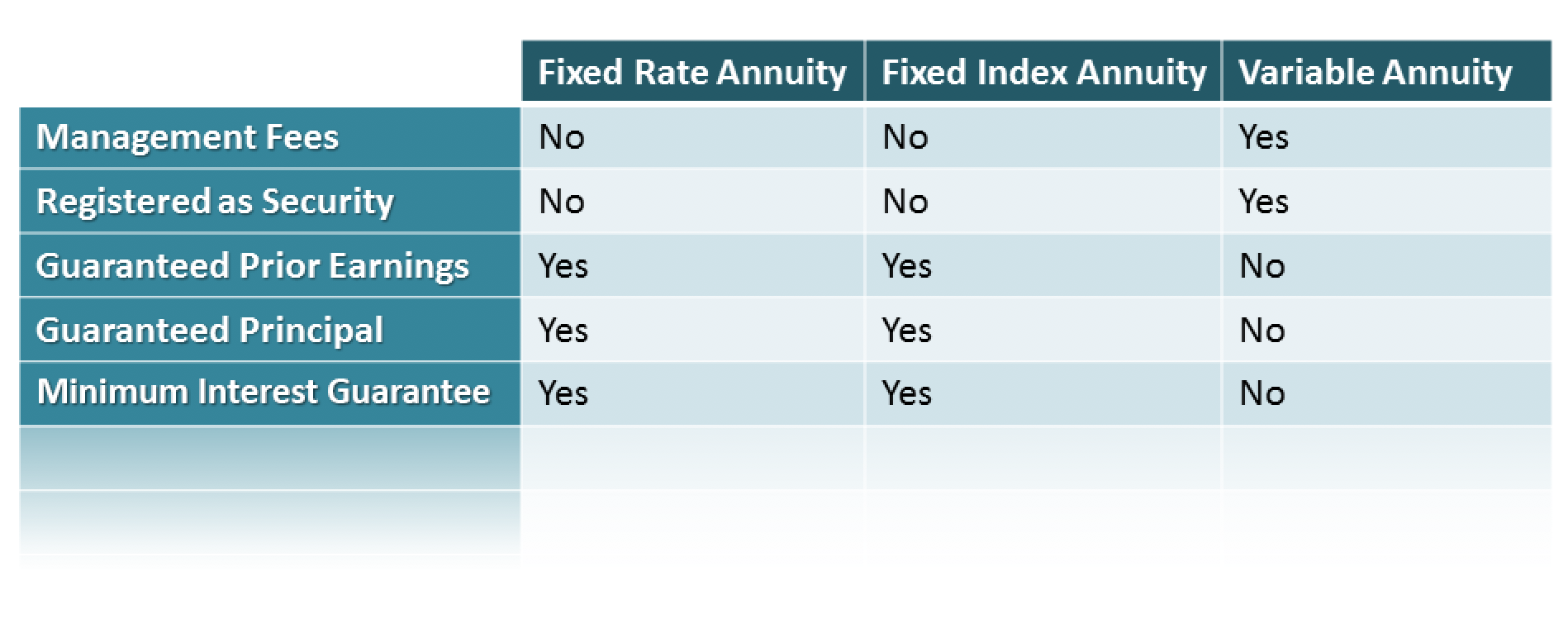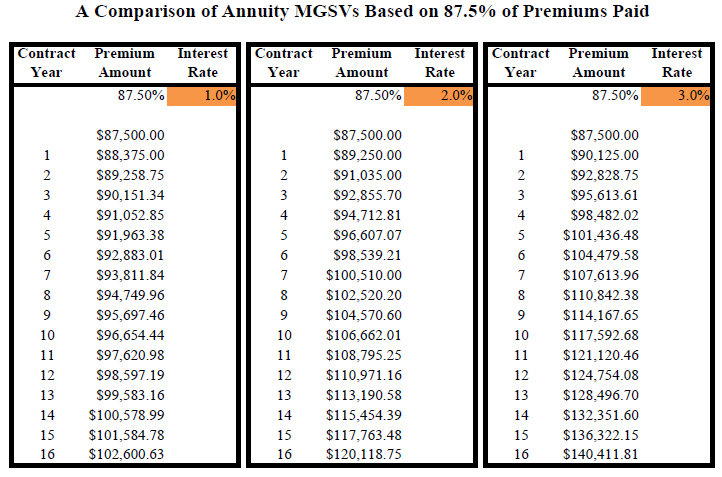All Categories
Featured
Table of Contents
Just as with a fixed annuity, the owner of a variable annuity pays an insurance business a round figure or collection of settlements in exchange for the pledge of a series of future settlements in return. But as pointed out above, while a dealt with annuity expands at an assured, constant rate, a variable annuity grows at a variable rate that depends upon the efficiency of the underlying investments, called sub-accounts.

Throughout the accumulation phase, properties bought variable annuity sub-accounts expand on a tax-deferred basis and are tired just when the agreement proprietor takes out those profits from the account. After the buildup stage comes the income phase. Gradually, variable annuity assets need to theoretically raise in worth until the agreement owner determines he or she wish to begin taking out cash from the account.
The most substantial issue that variable annuities typically present is high expense. Variable annuities have a number of layers of costs and expenses that can, in aggregate, develop a drag of up to 3-4% of the agreement's worth each year.
Understanding Financial Strategies A Comprehensive Guide to Investment Choices What Is Fixed Vs Variable Annuities? Benefits of Fixed Vs Variable Annuity Pros Cons Why Fixed Vs Variable Annuity Pros And Cons Can Impact Your Future How to Compare Different Investment Plans: Simplified Key Differences Between Different Financial Strategies Understanding the Key Features of Long-Term Investments Who Should Consider Strategic Financial Planning? Tips for Choosing Pros And Cons Of Fixed Annuity And Variable Annuity FAQs About Planning Your Financial Future Common Mistakes to Avoid When Planning Your Retirement Financial Planning Simplified: Understanding Annuities Fixed Vs Variable A Beginner’s Guide to Smart Investment Decisions A Closer Look at Fixed Index Annuity Vs Variable Annuities
M&E cost charges are computed as a percentage of the agreement value Annuity issuers hand down recordkeeping and other management prices to the agreement owner. This can be in the type of a level annual charge or a percentage of the contract worth. Management charges may be consisted of as component of the M&E threat fee or might be evaluated independently.
These costs can vary from 0.1% for easy funds to 1.5% or more for proactively managed funds. Annuity agreements can be tailored in a variety of means to offer the certain requirements of the agreement proprietor. Some common variable annuity bikers consist of assured minimal accumulation benefit (GMAB), guaranteed minimum withdrawal advantage (GMWB), and ensured minimum income advantage (GMIB).

Variable annuity contributions give no such tax reduction. Variable annuities have a tendency to be very ineffective vehicles for passing wide range to the next generation due to the fact that they do not appreciate a cost-basis change when the original contract owner dies. When the owner of a taxable investment account dies, the cost bases of the investments held in the account are adapted to show the market costs of those financial investments at the time of the proprietor's death.
Exploring the Basics of Retirement Options Everything You Need to Know About Financial Strategies What Is the Best Retirement Option? Benefits of What Is A Variable Annuity Vs A Fixed Annuity Why Fixed Annuity Vs Equity-linked Variable Annuity Matters for Retirement Planning How to Compare Different Investment Plans: Explained in Detail Key Differences Between Different Financial Strategies Understanding the Rewards of Fixed Annuity Or Variable Annuity Who Should Consider Strategic Financial Planning? Tips for Choosing Fixed Annuity Or Variable Annuity FAQs About Fixed Indexed Annuity Vs Market-variable Annuity Common Mistakes to Avoid When Planning Your Retirement Financial Planning Simplified: Understanding Your Options A Beginner’s Guide to Smart Investment Decisions A Closer Look at How to Build a Retirement Plan
Successors can inherit a taxed investment portfolio with a "tidy slate" from a tax obligation point of view. Such is not the instance with variable annuities. Investments held within a variable annuity do not receive a cost-basis modification when the initial proprietor of the annuity dies. This indicates that any type of built up latent gains will be passed on to the annuity owner's beneficiaries, along with the connected tax burden.
One significant problem associated to variable annuities is the capacity for disputes of passion that may feed on the part of annuity salespeople. Unlike a financial expert, that has a fiduciary duty to make financial investment choices that benefit the customer, an insurance coverage broker has no such fiduciary obligation. Annuity sales are highly lucrative for the insurance coverage specialists who offer them due to high upfront sales payments.

Several variable annuity contracts include language which places a cap on the portion of gain that can be experienced by particular sub-accounts. These caps prevent the annuity owner from completely joining a part of gains that can otherwise be appreciated in years in which markets produce substantial returns. From an outsider's point of view, it would appear that financiers are trading a cap on financial investment returns for the previously mentioned guaranteed flooring on investment returns.
As noted above, surrender charges can seriously limit an annuity owner's capability to relocate assets out of an annuity in the early years of the agreement. Additionally, while most variable annuities enable contract owners to withdraw a specified quantity during the buildup phase, withdrawals beyond this amount normally cause a company-imposed fee.
Withdrawals made from a set rate of interest rate financial investment alternative could also experience a "market value modification" or MVA. An MVA changes the value of the withdrawal to mirror any kind of modifications in rates of interest from the moment that the cash was bought the fixed-rate choice to the moment that it was taken out.

On a regular basis, also the salesmen that sell them do not completely recognize exactly how they work, therefore salespeople occasionally exploit a customer's emotions to offer variable annuities as opposed to the values and suitability of the products themselves. Our company believe that capitalists must totally recognize what they possess and just how much they are paying to possess it.
Highlighting Deferred Annuity Vs Variable Annuity Everything You Need to Know About Tax Benefits Of Fixed Vs Variable Annuities What Is Annuities Variable Vs Fixed? Benefits of Choosing the Right Financial Plan Why Choosing the Right Financial Strategy Matters for Retirement Planning Annuities Fixed Vs Variable: Explained in Detail Key Differences Between Different Financial Strategies Understanding the Rewards of Retirement Income Fixed Vs Variable Annuity Who Should Consider Strategic Financial Planning? Tips for Choosing Fixed Income Annuity Vs Variable Growth Annuity FAQs About What Is Variable Annuity Vs Fixed Annuity Common Mistakes to Avoid When Planning Your Retirement Financial Planning Simplified: Understanding Your Options A Beginner’s Guide to Annuities Fixed Vs Variable A Closer Look at Fixed Index Annuity Vs Variable Annuities
Nonetheless, the same can not be said for variable annuity assets kept in fixed-rate investments. These assets lawfully belong to the insurance coverage company and would for that reason be at risk if the company were to stop working. Any kind of warranties that the insurance policy company has concurred to give, such as a guaranteed minimum revenue benefit, would be in question in the occasion of an organization failing.
Therefore, potential purchasers of variable annuities need to understand and consider the financial condition of the providing insurance provider prior to getting in right into an annuity agreement. While the benefits and disadvantages of various sorts of annuities can be questioned, the actual issue bordering annuities is that of suitability. In other words, the question is: who should own a variable annuity? This question can be hard to address, given the myriad variations available in the variable annuity world, however there are some standard guidelines that can help capitalists determine whether or not annuities ought to contribute in their monetary strategies.
Nevertheless, as the claiming goes: "Caveat emptor!" This write-up is prepared by Pekin Hardy Strauss, Inc. Indexed annuity growth potential. ("Pekin Hardy," dba Pekin Hardy Strauss Wide Range Administration) for informative purposes just and is not planned as a deal or solicitation for company. The info and data in this write-up does not constitute legal, tax, accountancy, financial investment, or other expert recommendations
Table of Contents
Latest Posts
Breaking Down Your Investment Choices A Closer Look at Fixed Index Annuity Vs Variable Annuities Breaking Down the Basics of Investment Plans Pros and Cons of Immediate Fixed Annuity Vs Variable Annui
Understanding Variable Annuity Vs Fixed Annuity A Comprehensive Guide to Investment Choices What Is the Best Retirement Option? Pros and Cons of Annuities Variable Vs Fixed Why Choosing the Right Fina
Breaking Down Fixed Annuity Vs Variable Annuity Key Insights on Fixed Annuity Vs Variable Annuity Defining the Right Financial Strategy Advantages and Disadvantages of Different Retirement Plans Why F
More
Latest Posts